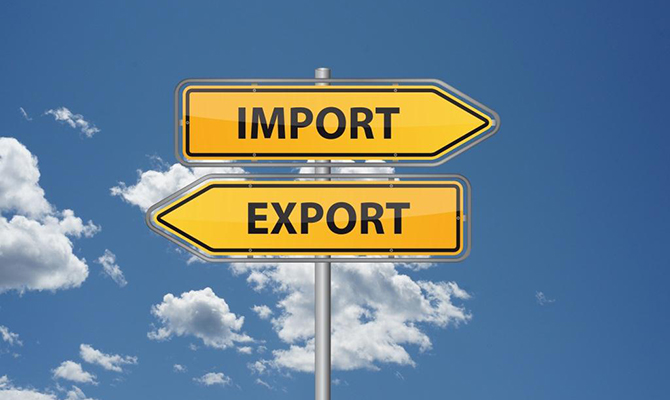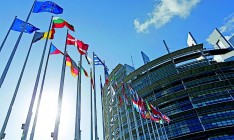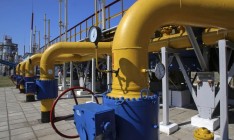Economy
new economyDuring the three months of duty-free exports to the EU Ukrainian business used the chance only partially

Three months have passed since the EU zeroed import duties for Ukraine within the framework of semi-annual unilateral trade liberalization on April 23, 2014. For our country it was a kind of a rehearsal of trade with the EU in terms of the free trade zone (FTZ), agreement on which – the economic part of the Association Agreement – Kyiv and Brussels signed on June 27. The rehearsal was quite successful. Based on data of the State Statistics Service and Capital’s own calculations thanks to temporary trade liberalization in January – May, Ukrainian producers were able to increase their commodities exports to the EU by 11.5% compared with the same period last year, accelerating from 7.5% in January – April. This is against the background of an overall decline in exports by 5.1% during five months of this year. Based on the results of this period Ukrainian exporters supplied to the EU products worth US $8.1 bn against last year’s US $7.3 bn, in particular, in May alone exports to the EU grew from US $1.2 bn to US $1.6 bn, i.e. 32%.
Truth to be told, the effect of the temporary trade preferences could have been more impressive had the Ukrainian producers used the opportunity more dynamically. Halfway through the time allotted for the special trade regulations they have barely used tariff quotas for import into the EU of those products duty-free import of which was limited in volumes. Although the purpose of the regime is to open access to Europe for companies that have not yet sold their products there, in practice mainly only manufacturers for which the European market is no longer a novelty have taken the opportunity to trade freely with the EU. Namely, those are farmers and manufacturers of mineral products.
As a result, activation of sales in the EU only partially compensated for the restriction of access to the Russian market for Ukrainian producers. In May supplies of Ukrainian goods to Russia dropped by 30.1% or US $425 mn, compared to the last month of spring in 2013 – down to US $961 mn. Therefore, the increase in exports to the EU by US $383 mn only partially compensated for such a loss. But so far it was impossible to fully compensate for the losses in trade with Russia over the last five months. During this period Ukrainian exports to Russia decreased by 23.9% and its losses reached US $1.7 bn, which is twice more than the gains from exports to Europe.
Rural activists
Farmers and agricultural producers were the first to benefit from the preferences, especially taking into account the fact that they mastered the European market long ago. In 2013 they sold there 23% of their exports. Basically those are manufacturers of crop products, which last year supplied to the EU 43% of all corn sold from Ukraine abroad, 36% of rye, 41% of buckwheat and millet, 69% of grain sorghum, 95% of seeds and oil plants. For example, in five months Ukrainian farmers exported to the EU cereals worth US $1.3 bn. For comparison, last year the total export of these products reached US $1.7 bn. Hungary increased purchases of Ukrainian grains sixfold, the UK – by 3 times, Austria – by 14 times. Ukrainian corn is predominantly in demand in the EU, which was sold there by our farmers to the amount of 6.2 mn worth US $1.2 bn. In January – May last year the figures were 3.3 mn t and US $0.9 bn, respectively.
Grains are imported to the EU from Ukraine under licenses issued for nine commodity groups by EU’s Directorate General for Agriculture and Rural Development. ProAgro Information Company says the 400,000 t quota for the supply of corn was used by 8.3% as of July 16. Also, the quota for wheat was used by 15.3% (950 t), the quota for oats - by 1.1% (4,000 t), the quota for barley – by 0.6% (250,000 t). The CEO of the Ukrainian Agribusiness Club Volodymyr Lapa explains that weak use of quotas is due to the fact that contracts for large amounts of grain supplies to the EU were signed before the introduction of the preferential regime. The companies had no reasons to ask their European contractors to issue licenses for duty-free imports, because imports of corn, wheat and other grains were not subject to duties, adds Taras Kachka, former negotiator at the FTZ talks with the EU and Vice President of the American Chamber of Commerce in Ukraine. Now exporters will have to apply for licenses actively, because on July 16 Brussels raised import duty on corn, sorghum and rye, which has been zero since 2010, to EUR 5.35/t. “We expect that in the third quarter the amounts of duty-free exports of grain to the EU will rise considerably, and based on results of the second six months of the year the quota will be used completely,” expects Lapa.
Lost chance
Overall, the insufficient use of temporary export benefits is the omission of almost all Ukrainian agricultural producers. In fact the use of import quotas under licenses for other products – mainly from livestock breeding - is close to zero. For example, Ukrainian manufacturers are allowed to import to the EU 12 t of beef a year at zero duties, but during five months in 2014, including the first month of the preferences, they sold there only 534 kg. For pork these figures are 40,000 t quota against 2.3 t of exports. In both cases, it is much less than 1% of the quota, and taking May alone – at the level of statistical error. Despite the presence of specific terms and conditions, in practice export of Ukrainian livestock products to the EU is now impossible. Lapa says that first two laws have to be adopted for that. The first one is on safety and quality of food, which was adopted last week and is now awaiting president’s signature. It harmonizes Ukrainian standards in this area with the European ones, provides for the establishment of a single supervisory authority in the segment of food safety and implements European principles for regulation of the GMOs. The second law – on identification and registration of animals – is waiting for the second reading in the parliament. In case by the end of the summer both laws are adopted and signed by the president, on September 28 – October 2 Ukrainian livestock enterprises will be inspected by the mission of experts from the DG SANCO (Health and Consumers) of the European Commission, according to the Minister of Agrarian Policy and Food Ihor Shvaika. “In case inspections are successful, Ukrainian producers will be able to start exporting meat and dairy products to the EU. Yet, it will not be under the preferential trade regime by November 1, but already under the agreement on the FTZ, which will come into effect,” says Lapa.
Poultry meat, unlike cattle meat is not banned in the EU. In the five months of this year Ukrainian companies sold 1,998 t of poultry meat to the EU, including in May – 727.6 t, which is approximately 2% of 36,000 t quota. In summer the situation with exports of these products improved. The head of the supervisory board at the Union of Poultry Breeders of Ukraine Oleksandr Bakumenko says of 16,000 t quota for fresh chicken, 12,000 t has already been contracted. A as a matter of fact within a month and a half of duty-free trade with the EU Ukrainian producers have imported 5,000 t of chicken meat. “The quota for poultry meat will be used fully,” says Kachka. Only few Ukrainian companies, which already have the necessary certificates for export to the EU, had the chance to benefit from the quota. Those are, in particular, the MHP agricultural holding, which has been selling its products in the EU since October 2013, albeit in small quantities. Complex Agromars, which received necessary certificates last year, is also ready to sell chicken to Europe.
At the same time, according to the head of the Office of Trade and Economic Cooperation with the EU at the Department of European Integration under the Ministry of Economic Development and Trade Oleksandra Nechyporenko, Ukrainian manufacturers are not using nearly a third of the preferential quotas granted by the EU. “Of the 27 quotas, 10 have never been used. We are currently trying to find out what seems to be the problem through Ukraine’s Representative Office in the EU,” she said.
The European Commission reported that as of July 23, over the first three months of the special trade regulations with the EU only 2 of the 27 quotas have been used by more than half. Also, within the first two weeks producers have completely used the 10,000 t quota for supplies of grape and apple juice mostly thanks to an Odesa-based company,” said Nechyporenko. She meant Vitmark-Ukraine (Jaffa, Nash Sіk TMs). Also, according to Kachka, T.B. Fruit (Galicia TM) is actively involved in supplies of juice to the EU. Honey producers made a breakthrough. In January – May 2013 they sold to the EU 5,000 t of the product in the amount of US $12.3 mn and during the first five months of this year they increased their exports (mainly to Spain and Italy) to 7,600 t, which brought them US $19.2 mn in earnings. Within the first three months of trade preferences honey producers used 65% of the annual 5,000 t quota for duty-free import into the EU.
Among other goods that Ukraine exports to the EU duty-free only in limited quantities, quota for grains and granules was used by 19%, for another four kinds of products – by 10.1%, for three types of products – by less than 1%. Thus, almost two-thirds of quotas still remain intact. “This list mainly consists of products of those manufacturers who have never worked or have worked very little on the European market. They need time to find customers, negotiate prices and terms of delivery and sign contracts,” explains Kachka. He added that it usually takes about a year for trade liberalization to have an effect on export of companies that have not previously been focused on supplies to the EU.
Give way to “old fellas”
In recent months domestic producers of mineral products, which, like farmers, have been present on the European market for some time now, have enlivened trade. Last year representatives of this industry supplied to the EU 35% of their exports. In January – May this year they mostly increased the sale of iron ore, coal, oil and petroleum products. In January – May Ukrainian exporters sold to the EU 694,700 t of iron ore more than in the same months last year, increasing their export profits by 13% - to US $770.5 mn. Poland, the Czech Republic, Slovakia and Austria were their main buyers. However, it is not related to trade preferences of Brussels. Analyst at Concorde Capital IC Roman Topolyuk says imports of Ukrainian metals and ore to the EU is no longer subject to duties after Ukraine joined the World Trade Organization, so trade liberalization with the EU had no influence. The expert added that the increase in supplies of iron ore is mainly due to the reduction of steel production in the EU, although it was restrained by the drop in ore prices during the first six months of the year.
The situation with coal is quite similar. Europeans increased its purchases by 604.4 t, providing Ukrainian suppliers (DTEK holding and smaller companies) with an increase in export earnings from the EU by 19% - to US $138.5 mn. A senior analyst at Dragon Capital Denys Sakva believes this was related not to the preferential trade regime with the EU, but to the fact that amidst falling coal prices and an increase in its production DTEK entered new markets, including the market of the EU. Also, the growth of coal exports, adds Topolyuk, is the result of devaluation of the hryvnia, which has made export economically viable for the first time over the last few years.








 of the agreement of syndication with Financial Times Limited are strictly prohibited. Use of materials which refers to France-Presse, Reuters, Interfax-Ukraine, Ukrainian News, UNIAN agencies is strictly prohibited. Materials marked
of the agreement of syndication with Financial Times Limited are strictly prohibited. Use of materials which refers to France-Presse, Reuters, Interfax-Ukraine, Ukrainian News, UNIAN agencies is strictly prohibited. Materials marked  are published as advertisements.
are published as advertisements.